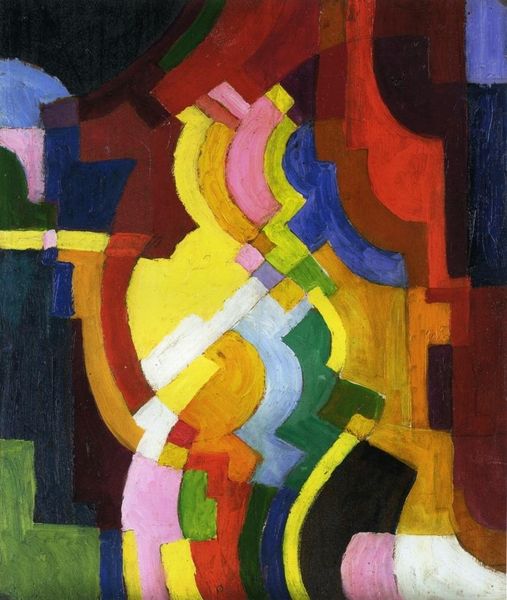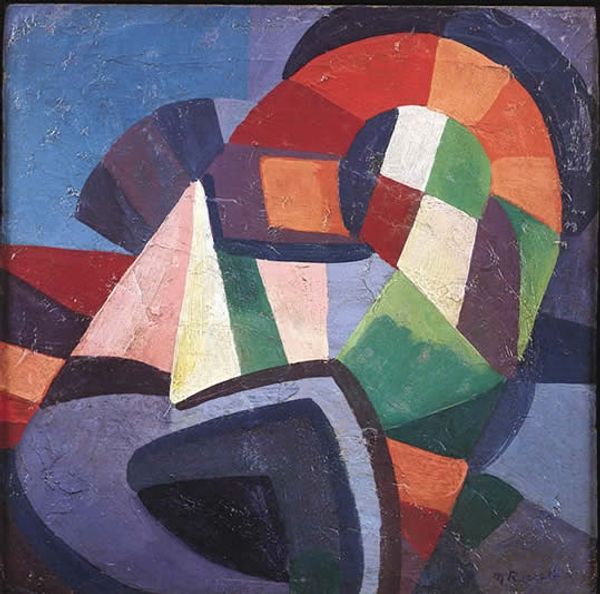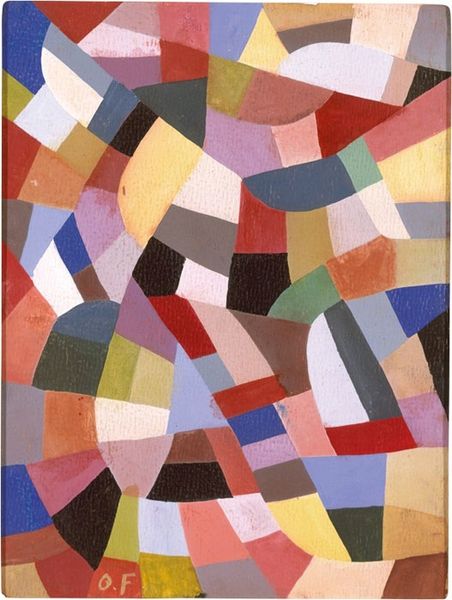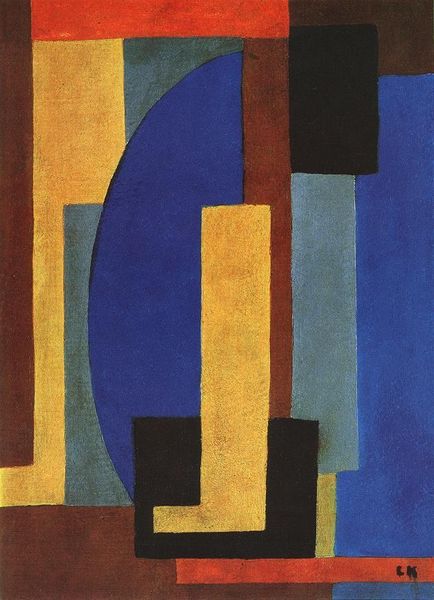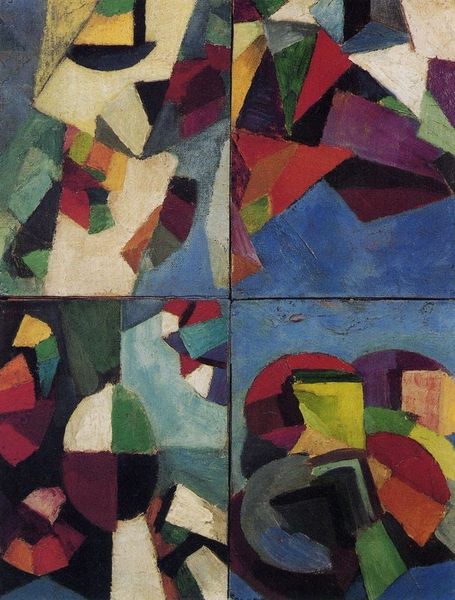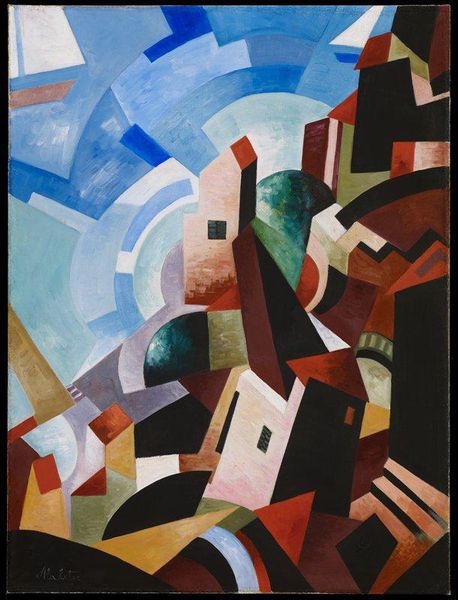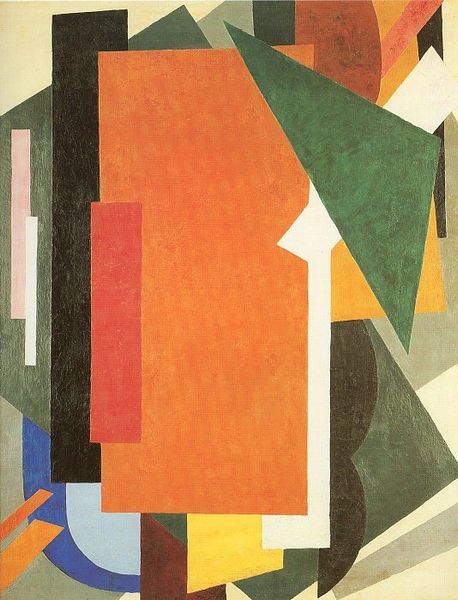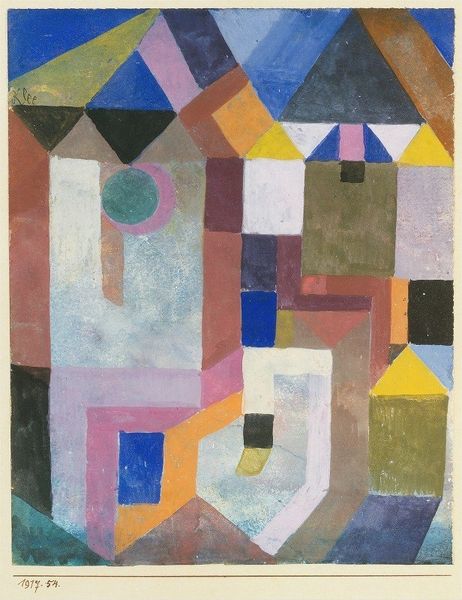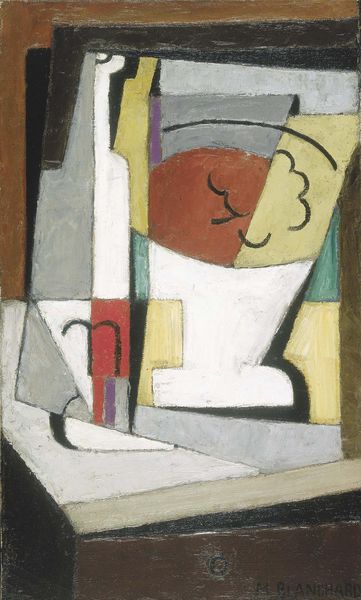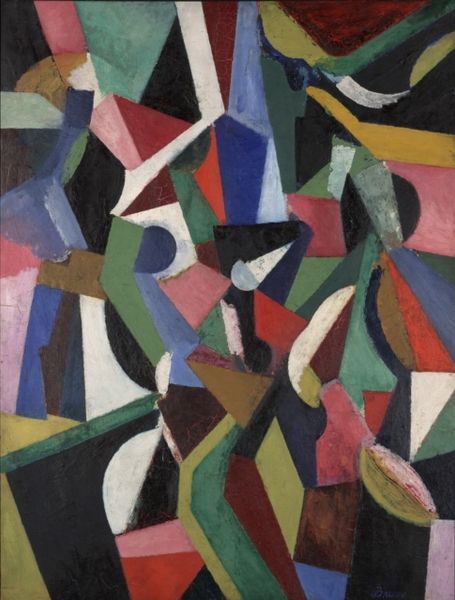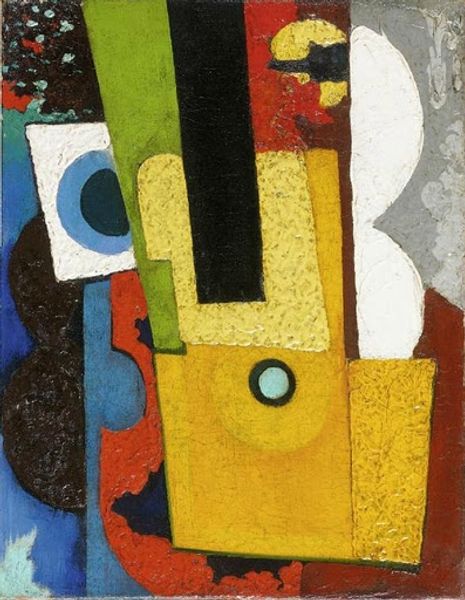
Dimensions: 53.1 x 38.5 cm
Copyright: Public domain
Curator: What a delightful puzzle! This is August Macke's "Colourful Shapes," painted in 1913. It’s an oil painting. The forms! I find them quite jolly, like an organized explosion of sweets. Editor: Jolly is one word for it. I see order struggling with chaos, the kind of tension that defined pre-war Europe. It’s more fraught to me, knowing what loomed then, especially as Macke himself didn’t survive it. Curator: True, it was created on the edge of cataclysm. Looking closer, there's a wonderful naivete in how the colours are layered. Almost childlike in their simplicity. Perhaps it’s not chaos, but the building blocks of a brave, new… something. Editor: Or perhaps, Macke was playing with the anxieties of his time by showing the instability of social constructs as colourful—but disconnected—shapes. He moved to explore abstraction as a way of commenting on how everything that feels stable might suddenly shift and break. Curator: I see it differently. Those curves amidst the rigid lines... they suggest possibilities, like seedlings pushing through concrete. The interplay speaks of emergence to me. I can easily picture music blossoming from these forms. Editor: Macke’s interest in popular culture really surfaces in works like these. His shapes don’t simply materialize from formal curiosity. Macke was drawn to the theatricality of avant-garde cabaret, where such motifs evoked modernity and moral reform while appealing to bourgeois audiences. Curator: The audacity of it, though! It isn’t afraid of being playful. A stark contrast to, say, the heavier expressionism gaining traction then. Macke creates a harmonious and uplifting effect despite all those angular edges. Editor: While it embraces a lightness that differs from heavier expressionism, it still challenges what a painting "should" be in its fragmentation. It makes a strong statement in its rejection of conventional representation. I see how these works paved the way for radical forms of artistic expression during and after the war. Curator: I get a strong sense of someone trying to make sense of the emerging modern world—I find such comforting determination radiating. Editor: Yes, Macke did provide his audience a pictorial toolbox to rebuild that broken world.
Comments
No comments
Be the first to comment and join the conversation on the ultimate creative platform.
